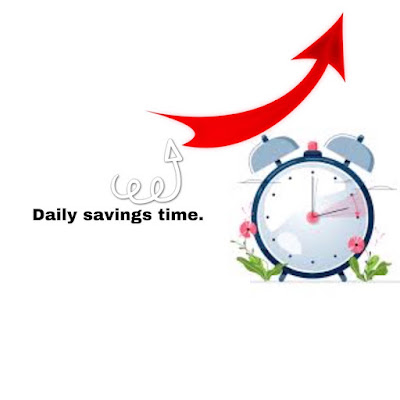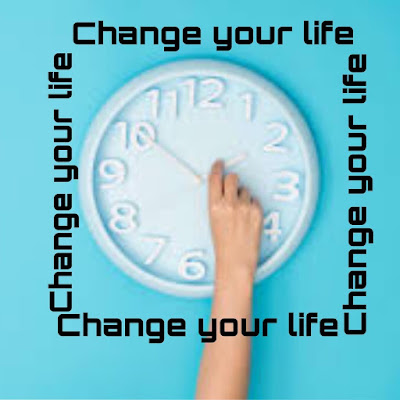Navigator:: Everything We Love to Hate About Daylight Savings and daylight savings time.
Welcome to the present version of Navigator, City Lab’s Saturday
bulletin.
At the point when Americans awaken on Sunday, everybody outside
Arizona, Hawaii and some U.S. regions will have lost an hour of their day. Most
will protest, once more, about the lost rest and the interruption to the body's
circadian beat - or about the reality even following quite a while of
protesting, we're actually changing our timekeepers two times per year.
Ongoing surveys show that almost 66% of U.S. grown-ups need to jettison
the switch, with two times as a significant number of those individuals liking
to remain sprung forward than to remain on standard time. Something like 28
states are thinking about related regulation, and Congress is at present
gauging a bill to take on light saving time all year the country over.
Following the most recent legislative discussion on Wednesday,
however, timekeepers will probably "fall back" again come November.
(In Europe, in the interim, the designs to at long last cancel the training
slowed down in 2021 in the midst of both the pandemic and Brexit.)
So while there's very little we can do but to acknowledge the
unavoidable, let us essentially figure out some mutual interest in our disdain
for the obsolete practice. Here is a once-over of a portion of the things we
love to despise about sunshine saving time, and then some.
The greatest beneficiaries of daylight savings haven’t
historically been your average citizens.
Sunshine
reserve funds was first acquainted briefly with the U.S. In the next year,
states and neighborhood districts autonomously took on the framework and
concluded their own beginning and end times. That was until 1966, when Congress
sat back Act laying out public principles for noticing light saving time.
Among the
people who benefited most were the railroad business - whose planning was made
even more convoluted with an unregulated framework - and retailers. As the late
writer Michael Downing wrote in his detailed story book on the historical
backdrop of sunshine saving, the offices of business campaigned hard for the
time change since they comprehended that an additional an hour of daylight in
the evening gave individuals more motivation to go out to shop after work.
The energy-saving impacts may be … negligible.
Sunlight
saving was presented as an energy-saving measure, expected to limit the
requirement for lighting. In the century since, analysts have raised doubt
about the advantages of the rehashed this way and that, and raised concerns.
"It
possibly saves us a smidgen of energy as far as cooling and lighting for our
business structures," says David Sailor, top of the Urban Climate Research
Center at Arizona State University. However, at home, where AC and other
electronic use increments, energy utilization really goes up. "Studies and
our own demonstrating have demonstrated the effects on be tiny, so there's not
a reasonable agreement on whether it's nothing to joke about."
Many people may enjoy lighter evenings after a dark winter,
but…
The
disturbance to our rest designs has been connected to more medical issues like
respiratory failures and strokes, as per mounting research. It additionally
drives up car crashes.
A 2020
investigation of around 732,800 traffic occurrences recorded somewhere in the
range of 1996 and 2017 observed a 6% spike in lethal accidents during the
primary weeks’ worth of work with light saving time in actuality. That added up
to approximately 28 passing’s per year, with the most elevated risk during
morning hours.
People in the “western edge” have it worse.
The
individuals who live on the western edge of their time region will generally
get less rest than every other person because of later dawns and nightfall’s
during light saving time, and that implies they feel the pessimistic effects
more. As indicated by that equivalent traffic study, the spike in lethal
mishaps in those districts is 8%. What's more, as nervous system specialist
Beth Ann Mallow at Vanderbilt University writes in The Conversation, less rest
can likewise be connected to higher paces of stoutness, diabetes, coronary
illness and even disease.
Believe it or not, daylight savings was once a thing to celebrate.
The initial 23-hour day in the
U.S., on March 30, 1918, was welcomed with an intricate function in Madison
Square Park that included melodic groups, ensembles and huge loads of
individuals in the roads of New York City. The festival endured two hours, from
12 PM to the recently changed 3 a.m.
Is it safe to say that you are
a defender of the time change? Get in contact with me with your best
contention.
The Quarantine Atlas, motivated
by Bloomberg City Lab peruses' custom made maps during the pandemic, goes at a
bargain from Black Dog and Leventhal Publishers on April 19.
If you pre-request currently,
you'll get a restricted release postcard pack including five unique works of
art from the book. This is the way to transfer your receipt.
How have two years of the
pandemic reshaped your life? Show us with a custom made map and submit it to
our Covid-19 planning project.
What
we’re writing
• With Ukrainians defying continued with
attacks from Russian powers, social areas that reflect their public person are
furthermore enduring an onslaught.
• Mardi Gras returned roaring this year.
Regardless, to New Orleans, it's some different option from party.
• The charm of the "post-present
day park" is strong, yet a humanist battles that astounding metropolitan
stops that rely upon private funders can set off dislodging and channel
resources from other public spaces.
• From roadside weeds to accidental
gardens, another book battles metropolitan regions are overflowing with
unconstrained standard spaces that don't get their due.
• Bike sharing started as a dissention
advancement with a little fleet of white bicycles in mid-1960s Amsterdam. This
is the manner in which it led a transportation model that is gotten a colossal
number free from metropolitan regions all around the planet.
From our
narratives, stories that notice Women's History Month:
• The Women behind Historic House
Designs
• The Not-So Secret Lives of Black
Pittsburgh Women
• Bit by bit directions to Rebuild
Cities for Caregiving
•
What we're
following
• The Nickelodeon liveliness that
prepared an age to loathe free venture (Slate)
• Is Trilithon, a "association
town" for Marvel's Georgia creation workers, the configuration for future
metropolitan regions? (Combination)
• At 101, and following 36 years as city
corridor pioneer, "Tempest Hazel" is at this point a power in Canada
(New York Times)
• Creatures living in our metropolitan
regions are progressing in a couple of dumbfounding ways (New Scientist)






.jpg)
0 Comments
Well come to Health net career.